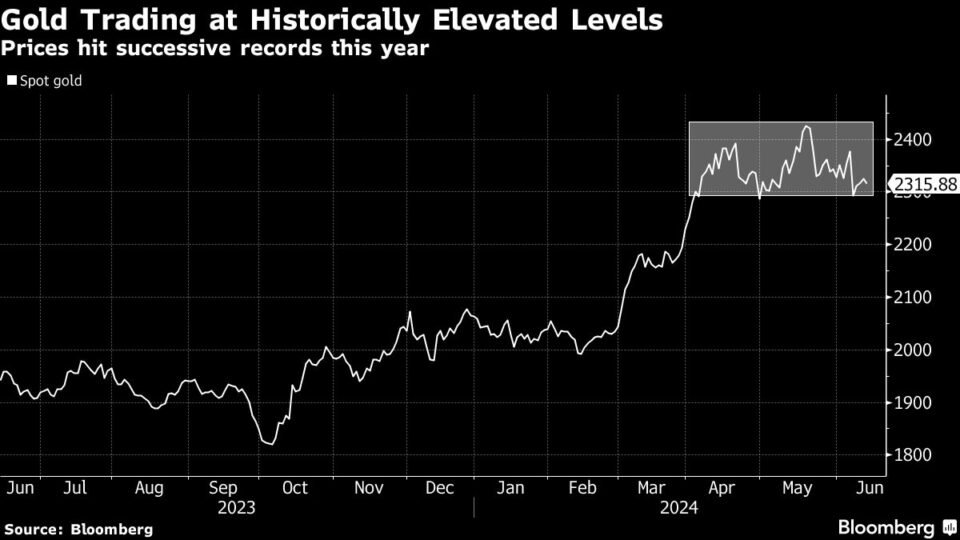(Bloomberg) — Asian retail gold buyers are still keen to purchase more of the precious metal even as prices hover at elevated levels, with geopolitical and macroeconomic uncertainties driving their interest.
Most Read from Bloomberg
Attendees at a precious metals conference in Singapore this week were enthusiastic about bullion’s prospects, seeing demand across the region staying strong. That’s even after a record-setting rally that’s spurred a 16% jump since mid-February, taking prices to above $2,300 an ounce.
“The change in sentiment has brought obviously new higher prices — and that brought people back in,” Rhona O’Connell, head of market analysis at StoneX Financial Ltd., sad on the sidelines of the conference. But “it’s not just a reaction to price, it’s a reaction to what has driven the price in the first place, which is uncertainty and the concept of risk.”
With more than 40 countries holding elections this year, political risk was a major theme at the Asia Pacific Precious Metals Conference. Anxiety over the worsening state of major economies, particularly China, and a slump in local currencies are also adding to gold’s appeal, even as it makes the metal more expensive for most buyers.
China remains the dominant retail market in Asia, and is challenging financial hubs like London and New York as the most important driver of prices. The metal has a long history in China as a savings tool, and the country is the top consumer and leading producer. That’s now being juiced by turmoil in the local property and stock markets.
The Chinese market is “probably the biggest driving force in price discovery right now,” said London Bullion Market Association Chief Executive Officer Ruth Crowell. “The growth in terms of demand for gold in Asia will continue.”
The LBMA is growing its presence in Asia, where it has seen huge growth in new members including banks, traders and good delivery refineries, Crowell said.
Elsewhere in Asia, there were some softening of demand in India between March and April, but appetite has returned as jewelers see higher sales during the festival season compared to the previous year, according to the World Gold Council.
In smaller markets like Vietnam, demand is strong with consumption in the first half expected to expand 10% year-on-year, according to Huynh Trung Khanh, vice chairman of the Vietnam Gold Traders Association.
In Japan, purchases are holding up even as the weakening yen makes bullion considerably more expensive for buyers there.
“We are seeing selling of course, but more buying, at that historical high level,” said Bruce Ikemizu, chief director at the Japanese Bullion Market Association. “This never happened in the past.”
Supply from scrap metal in the region has also tightened — which is unusual in this elevated price environment and is a “clear illustration that consumers don’t want to get rid of their gold,” said Nikos Kavalis, managing director at consultancy Metals Focus Ltd.
Over the longer-term, however, there’s reason to temper the bullishness as the geopolitical outlook may stabilize once this year’s massive election cycle is over.
“That takes one element of support out, unless the regimes that come in are enough to worry people,” StoneX’s O’Connell said.
Most Read from Bloomberg Businessweek
©2024 Bloomberg L.P.

